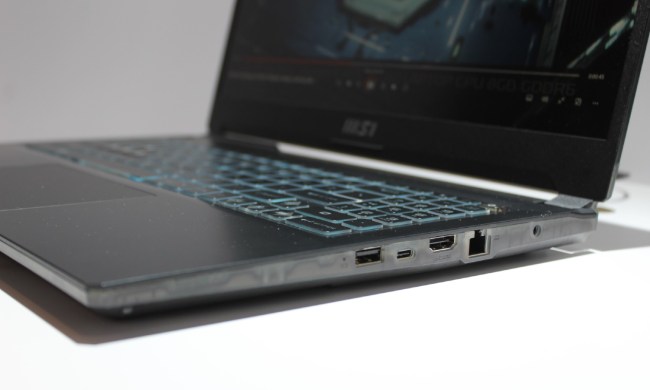
Tandem OLED made quite a splash on the new M4 iPad Pro when it was announced. After all, it seemed to solve one of the major issues with OLED screens. Having used the display myself, I can say it’s certainly impressive.
That’s why I was excited to see that Windows laptops were quickly adopting the technology as well, with the first one announced being the new XPS 13 Copilot+ laptop.
But as I dug into it, the more confusing the picture became around what tandem OLED is and how it can be used.
Why tandem OLED?

Basically, tandem OLED is exactly what it sounds like — it’s two OLED panels stacked one over the other. Before we get into why tandem OLED is a good thing, let’s talk about the basics.
OLED stands for Organic Light Emitting Diode. Instead of having a backlight (an LED, or Light Emitting Diode) with some number of lighting zones shining through a panel of individual liquid crystals (LCD, or Liquid Crystal Display) to display an image, each individual OLED pixel generates its own light and color. Essentially, that allows OLED displays to turn each individual pixel on and off and to set its color, resulting in deeper blacks, purer whites, and often more accurate colors.
A limitation of OLED has been its limited brightness (good but not great), along with its power draw, especially when displaying brighter images. Other display technologies, such as mini-LED, offer a lot more brightness, and low-power IPS panels, for example, can burn less power. This is, obviously, a paramount concern on a laptop.
Tandem OLED aims at resolving one or the other problem, or potentially both at the same time. Apple’s tandem OLED implementation on the latest iPad Pro focuses on brightness, which is particularly important in displaying great high dynamic range (HDR) content. Apple calls its new displays “Ultra Retina XDR,” which is a play on the name for its “Liquid Retina XDR” mini-LED panels in the latest MacBook Pro. Another advantage of tandem OLED is that it can help avoid burn-in, because each OLED layer doesn’t have to get as bright.
The iPad Pro Tandem OLED display can hit 1,000 nits in standard dynamic range (SDR) content and 1,600 nits in HDR. That’s according to Apple. But Apple makes no claims about its efficiency. The new iPad Pro is thinner than the older mini-LED iPad Pro, but Apple estimates the same battery life. So, the implication is that the new displays are at least somewhat more efficient even while being incredibly bright.
Dell takes a different approach

Dell’s new XPS 13 Copilot+ model has a tandem OLED option. What surprised me as I anticipated this new laptop, which uses Qualcomm’s more efficient Snapdragon X Elite Arm chipset, is that its display was being used on a laptop that I already reviewed — the Intel Meteor Lake XPS 13 released earlier this year.
It surprised me in part because, while that laptop’s display has OLED’s usual inky blacks brilliant and accurate colors, it didn’t hit the kind of brightness that Apple advertises for the iPad Pro. Furthermore, the tandem OLED display wasn’t mentioned in the marketing materials at the time.
I contacted Dell to find out more, and it provided the following statement:
“XPS 13 uses a tandem OLED design co-developed with one of our display partners. By using tandem technology, which stacks multiple emissive layers on top of each other, it increased the efficiency of our OLED display. This design allows for higher brightness and a longer lifespan with the same power input. Multiple layers enable these new tandem OLEDs to achieve higher luminous efficiency, meaning the display can produce more light compared to single-stack OLEDs currently on the market using the same amount of electrical power.
Because OLEDs generally consume more power than traditional LCD (IPS) panels, minimizing power consumption is crucial. The XPS 13’s new tandem OLED design lowers power consumption for the same brightness compared to the older single-stack OLED, which helps extend battery life. This new design, combined with tandem technology, improves battery runtime by about 10% while also being thinner and lighter. As a result, the new XPS 13 is approximately 3% thinner and 5% lighter than the previous generation with its older OLED.
We spec all XPS OLEDs at 400 nits due to their inherently better contrast ratios compared to LCDs, which are spec’d at 500 nits. The new OLED design and tandem technology not only achieves lower power consumption, but also features HDR TrueBlack 500, with 1,000,000:1 contrast ratios and 1.07 billion colors.”
So, Dell’s approach is to focus on efficiency instead of brightness. The XPS 13’s tandem OLED display came in at 482 nits, which is brighter than some other OLED displays I’ve tested, but nothing like the iPad Pro’s rating. Most OLED displays come in at around 400 nits, so the Dell version is still an improvement over the average.
At the same time, Dell is claiming a 10% improvement in battery life. The XPS 13 OLED version managed 7.25 hours of web browsing compared to the IPS version’s 14 hours, and it’s around the same as other OLED machines with Intel’s Meteor Lake chipset. I’m just not sure whether there’s a 10% improvement.
Things aren’t always as they seem

Arguably, Apple’s implementation of Tandem OLED is the more impressive — at least, on paper. All that brightness is awesome if it doesn’t come at the cost of significantly reduced battery life. But that’s something I can’t verify one way or another right now.
Dell’s approach is also good in theory. But it’s hard to say that the XPS 13’s somewhat more efficient tandem OLED display makes a meaningful difference in that laptop’s battery life.
Either way, I’d love to eventually see Windows laptops (and even MacBooks) adopt tandem OLED panels for the goal of achieving better brightness — perhaps even on



